#deckmaking
Text
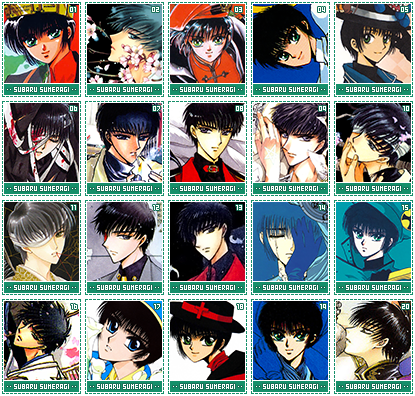

#316 - Subaru Sumeragi from Tokyo Babylon & X/1999
YOINK-- my husband now!
10 notes
·
View notes
Text
Found a new Roguelite game to pour hours into, lads... Dungeon Drafters is a deckbuilding roguelite very visibly made by fans of YGO and MtG.
There's 5 colors of cards, the four elements, and a special "Stranger" based around odd effects and RNG. These archetypes are color coded Red, Blue, Yellow, Green, and Purple. Very subtle.
You gain booster packs and draw random cards to assemble them into a deck. The cards all have (pixel) art and flavor text in a way that just oozes MtG. And a lot of cards are specific references to YGO or MtG cards. The Red "Raider" archetype has at least two lightning bolts that deal 3 damage. The Blue "Occult" archetype has a status ailment (Hex) that transforms enemies into a harmless frog form (and also sets their HP to 1, allowing for quick kills of bulky things).
One such Hex card is named "Frog the Weak", after everyone's favorite not-a-frog Frog the Jam from YGO.
The way they approximate a mana curve in a game with no lands (and, essentially, turn based dungeon crawler combat) is really clever too - every card has a certain number of pips on them, (for instance a Raider card might have 5 Red Pips), and your deck also has 5 "Rune" slots during deckmaking.
Each slot can be filled by a Rune of any of the 5 Colors, and your deck can contain cards up to the number of pips of that color. So a deck with Runes like R/R/R/B/B can have Raider cards up to 3 Pips, and Occult cards up to 2 Pips.
It's not a cost you play during gameplay, but instead a restriction during deck-making. This means that a 5 color smorgasbord deck, rather than having to worry about a mana curve and getting the right resources, instead restricts itself by only being able to pull the 1 Pip cards from each color - the weakest stuff.
You can also use "clear" runes, which don't increase the cost ceiling, but instead grant passive effects like bonus max health, since this is still a dungeoncrawler.
5 notes
·
View notes
Video
Fun skate session with fellow #Fingerboard #DeckMaker Vlad from @catfishbbq in #Redlands #California! Follow Vlad’s Company and also @emanantsupplyco ✨🌎☮️‼️ #EMNTlife #CatfishBBQ #StayEmanant #EmanantSupplyCo #Thrasher #ShakeJunt #PharmacyBoardshop #Ethika #Emerica (at Redlands, California) https://www.instagram.com/p/CR-2gsyg4iT/?utm_medium=tumblr
#fingerboard#deckmaker#redlands#california#emntlife#catfishbbq#stayemanant#emanantsupplyco#thrasher#shakejunt#pharmacyboardshop#ethika#emerica
0 notes
Note
D&D ask meme: 26, 62, 69!
i believe this was for six beans! so:
26. who do they miss?
nobody in particular! six beans does not believe in forming lasting attachments with anybody.
62. outside of otherworldly forces, what do they believe in?
six beans believes very strongly in taking anything that isn’t nailed down and will fit in his pockets!! he also believes in hiding behind his party members.
69. how would they describe their party members?
in no particular order:
feng xiao: enormously fussy and thoroughly entertaining. great to hide behind!
tovia: very sweet. a dear. for some reason when she frowns at six beans he almost feels a prickle of conscience. oh well! not as good to hide behind as feng xiao though
vilus diem: almost as entertaining as feng xiao! not worth hiding behind, though; wizards never are.
ferdinand deckmaker, mba: speaker of business cant and six beans’s senpai, though he’d never admit it.
ask me d&d questions!
3 notes
·
View notes
Text
Playing Cards in Golarion
TL;DR: I propose that standard playing cards in Golarion be a 52-card deck much like the modern standard, with suites of Tiles, Fans, Candles, and Cups, and Page, Knight, and Lord face cards.
Paizo has established that the standard deck for card games in the Inner Sea is not the Harrow Deck. So what is the standard deck of playing cards? It perhaps ought to be easily replicated with the modern standard deck of 52 cards, for one. Luckily, the pattern of 4 suits with 10 numbered and 3 face cards is quite old, and seen in many different societies, so it seems perfectly reasonable to have it appear in Golarion as well.
Now, what are our suits? The Harrow deck takes inspiration from game mechanics. I propose that the playing cards take inspiration from the elemental planes, with the following suites: Tiles (associated with Earth), Fans (Air), Candles (Fire), and Cups (Water).
I propose these suites because each of them has a distinctive silhouette, Tiles and Cups have both appeared as actual suites (you may know Tiles as Diamonds), the elemental association is neither obscure nor blatant to the point that nobody could ever be surprised by it, and these objects would be familiar to a lot of people. (Substituting Tiles with Acorns, or Fans with Bells, or Candles with Lamps or Torches could be a reasonable choice.)
The names of the face cards are less important, but in keeping with Paizo's behavior around gender, I'd propose Pages, Knights, and Lords as the three face cards, with the possibility of different deckmakers rendering the cards with different genders.
And obviously some decks should render the face cards as, say, elemental entities of various grandness, or render the numbered fan cards as beautiful overlapping fan displays or whatnot, but that almost goes without saying.
(Note: This proposal was developed for a homebrew setting, and applies equally well to a variety of D&Dish settings.)
12 notes
·
View notes
Text
Oathbreaker
I’d been thinking for a while about what I’d wanted out of a card game. When Artifact was on the verge of release I thought that was it, because it tried a new turn system that alleviated some of the problems competitive cardgames tended to have. One of the major problems of MTG is the kind of inconsistency that comes with a card-based resource, which is solved by modern digital cardgames in the form of mana incrementally increasing independant of cards. Artifact in particular solved a problem involving identity and the problem with storm achetypes where one player would play many spells back to back while the other would be forced to watch them play solitaire and hope they didn’t immediately win. Despite that Artifact failed to completely remove the storm and those situations, though the existence of Incarnation of Selemene and the casting requirements of needing a hero on the board.
Out of MTG, the format of EDH ended up being the most interesting because of how much identity a deckmaker can put into a deck. But some of the EDH ruleset ended up not being for the best, the life total and cumbersome deck sizes means its difficult to shuffle and that combo decks, usually storm or doomsday, end up being particularly dominant.
Enter Oathbreaker.
Its harder to use planeswalkers as combo pieces. So now instead of choosing a creature as a commander you choose a planeswalker and an instant or sorcery as a signature spell. Commander tax applies to each of them individually.
It seems to be a good format and has mostly stopped me from thinking of ways a cardgame could be improved. As long as storm stays out of the archetype and there isn’t a combo that is too fast, it could potentially be a resilient format. It’s sixty card singleton so shuffling shouldn’t be as much of a hassle. And because of the focus on board based aggression as a result of normal life totals, there should be less of an emphasis on tutors and combos since staying alive is a legitimate concern.
But there’s still the remaining problem. Magic cards are expensive. And its hard to justify playing when that would mean shelling out upwards of a hundred dollars for even a reasonably powerful deck. Or for each of several people in a playgroup who have by now mostly abandoned MTG as a result of bad handling of it’s competitive scene.
As someone who has countless EDH decklists, and two unused decks, and already of dozens of Oathbreaker decklists, and no actual decks, I’ll be watching the format closely and hoping it succeeds. Or then, reasonably hoping to find something to entertain myself with.
DISCARD
I guess I should talk about decks I’d been looking at. The obvious choice for me is Davriel, Rogue Shadowmage or Liliana of the Veil since I’d always wanted to play a singleton pox deck. Pox or Delirium Skeins probably would be the signature spell. The deck would use a pox or 8-rack shell.
MILL
Jace, Wielder of Mysteries has been thrown around a lot, a lot of people post about him because of a few cute combos where you deck yourself with Mana Severance or Treasure Hunt as the signature if you only run islands. However I think some kind of control spell with Paradigm Shift in the deck along Leveler and Thought Lash make for a more interesting combo deck.
KINGMAKER
Then a political deck. Kaya, Orzhov Usurper has some particularly interesting combinations. Hunted Lammasu and Hunted Horror dump an enormous amount of power efficiently on the board if there are more than two players. Kaya in particular can deal with the tokens somewhat easily. Alliance of Arms and Orzhov Advokist just existing solidified the theme I wanted to go for.
1 note
·
View note
Text
A full deckmaking tutorial.
Target ranks: Copper - Amethyst. High ranked players may read for the heck of it, but I doubt they will find anything new.
In this post you’ll find a tutorial on how to make a deck and maximize it’s effectiveness. Not talking about certain metas here, but rather general steps and tips for most players. Feel free to skip some things you really think you know about - like the paragraph below!
A little bit of theory
In Undercards decks can be divided into several major groups regardless of the class.
-Aggro: A deck that aims to end the game early. An aggro deck usually consists of charges or just cheap monsters and some ways to deal with their counters - Taunt, Bug Mouth and some others. Usually those “ways” are silence.
-Zoo: An aggro deck that still relies on early game but doesn’t necessarily rush the opponent’s healthbar. Rather, it uses monsters like Napstablook, Charles and such to seize the board control really early, and turns aggressive when said board control is more or less secure.
-Midrange: A midgame oriented deck, and the most versatile type. It’s pace is in between aggro and control, thus, they attempt to slow the game vs aggro, and turn aggressive themselves vs control. Consists of cards that have good value or tempo factors, while also keeping card advantage. Effective trading (definiton below) is the main point of midrange decks.
-Control: A lategame oriented deck. Also sometimes called Stall. The most iconic form of Control is Chara Stall DT. Other notable one is Mill Patience. Control decks want to go to late game either to play their win card/combo (Chara), overwhelm the opponent with big, threatening cards (Integrity likes to do that), or continue surviving, leaving opponent to die from Fatigue.
-Combo: These decks are all-in focused on a certain card/combo in their deck. Cloning Frisk Integ, Last Dream DT, all are examples of combo decks. Includes OTK (One Turn Kill) decks.
General
So now that we know what are the decks in this game, we can start making them. Feel free to skip some parts, if you, for example, want to make a midrange deck, you don’t really have to read the aggro part ;p
Because this is a full tutorial for ranks starting from copper, I’ll give you that - the deckmaking process itself is in the end, scroll. Although I’d really recommend to read the below, at least your respective decktype, because you might not be able to understand what’s going on in the end, if you didn’t read the beginning :)
Aggro
Main soul is Bravery. Alternatively, there’s a Justice, Patience and even a Determination version.

This is an aggro deck. It consists of cheap monsters to have the board early on, charges to rush, atk buffs for even more rush, silence to get rid of counters and a Froggit Trio to handle other aggros (snowmen and Charles help too). Most other souls would want to get a draw engine, like Fishing Rod, or Follower 1, but bravery has passive. This is because with so much cheap monsters you have to play them all quick, thus, run out of cards in hand.
To make an Aggro deck you need to have all the parts described above. You need to convert all your gold to face damage, so most of your cards are either ways of dealing damage, or helping deal damage (silence). Cheap cards like Spider and Tiny Froggit also count because they usually are able to get a face attack when they flood the board early. The other 2-3 cards may be tech cards for handling specifically annoying situations.
Aggro decks fear handclog. See how there is only one Aaron’s secret and Tsunderplane? That’s because they both violate other 2 rules of aggro, but help dealing face damage so much, one copy of each can pass.
- Handclog cards are a no-no. Anything that can be a “dead”, useless draw should be really frowned upon.
- Cards costing more than 5G are generally avoided. Tsunderplane can be an exception.
Zoo decks should be built accordingly, but the face damage cards like Charge monsters are less and the cheap, sticky, tempo-ish cards are more. The handclog rule is less strict but it’s still there. Bravery and Kindness are the main souls.
Midrange
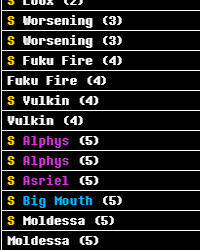
This an example of Midrange deck. As you can see, the cards there are either for effective board control (Magic: Deal DMG, Muffet’s Pet, So Sorry and literally two thirds of the deck). Alphys helps with card advantage (basically not running out of resources), Mettaton EX counters control decks and helps your board survive longer vs something that uses, for example, Asgore.
Main souls: Justice, Perseverance, Integrity. Also Kindness, but it stands out and has a separate post. In card games trading means attacking an enemy monster with your monster. Although originally was used only when it led to death of monsters, nowadays trading is just attacking one monster with another. And doing this effectively is what midranges focus on.
To build a midrange deck you need to focus heavily on board control and cards that cost 3-9 and help controlling the board. Don’t overdo Legends - 3-4 is usually enough. Mettaton EX is not that good anymore in most of midrange decks but he can help vs charastall and boardwipes, as for DT, typical choice is Omega Flowey, while Angel Of Death and The Heroine can also be useful. Finally, you need at least one board clear and some anti-aggro cards. They need to be useful vs non-aggro, so, don’t drool on Blue Laser - pack a Big Mouth/Dancer Mettaton instead.
Kindness and Integrity midranges also exist, though they are odd from Justice/Perseverance ones. Instead of being reactive with damaging cards, they use good-statted monsters with 4-6 cost to seize the board, for example, Lemon Bread, Alphys, Ice Wolf, So Sorry, Muffet’s Pet.
Integrity is in general considered to be midrange because Fortune and their passive make practically any Integrity deck superior in midgame.
Librarian decks tend to be a form of midrange, or, rarely, control. I have a link to Librarian post (it got a separate one). Read more.
Control

Not so popular in UC. Can even be limited to the 2 decks above (DT chara and Patience Mill). This is caused by lack of control finishers, Chara and Frisk being, in fact, the only ones. Control deckbuilding can have some similarities to combo decks, as they both focus on their survival. So, you need your win condition (Chara, in this case) and tools to survive. Can either be board clears, Taunts, Healing, Removal or a mixture of all. Control decks rarely aim to control the board heavily, despite the name. If Integrity Coffin can be considered control, it’s an exception then.
Usually Control doesn’t need a specific anti-aggro card, because Taunts and Healing are already included. It can run Dancer Mettaton though, if really needed.
Combo
Actually those are built much like control. The difference there is that control wants to survive until lategame, while combo deck wants to draw their win combo. Examples are Torilock, OTK Kindness, Frisk Cloning, DT Last Dream, so on. To build a combo deck, you need the… combo. Then, Taunts, Healing, Removal, anything that will allow you to survive. If your deck is an OTK that fears taunt, for example, might want to put something that counters taunt. You can also put gold gain and card draw for pulling the combo faster.
Universal deckmaking tips
-Look for a stable win condition, a singular goal.
That means you should include cards that will help you attain a goal you have in mind. For example, Tiny Froggit is a powerful aggro card, yet stall chara DT deck won’t be happy if you decide to run 3 of those. And I doubt it’s a wise idea to run an Asriel Dreemurr in Aggro deck.
-Cost distribution.
High cost cards tend to be flashy and powerful, like Onion San or Legendaries. Rarity does not equal power, and if you give in to flashiness of legendaries and high cost epics, you might end up having 15 cards of 7+ cost, and, that’s not needed. Makes sure you have early-game, mid-game, late-game. Some control decks can stall out early stage with taunts.
Step-by-step deckmaking process
Step 1: Think of a win condition (the goal of your deck) and the decktype.
Step 2: Add the auto-include cards. Most deck have them. For Dog deck, add the necessary Dogs. For Aggro - add charges. Et cetera.
Step 3: Add the decktype specific cards. For aggro it’s draw engine and a Silence, for midrange it’s a couple of Fuku Fire, for most Integrity it’s a mid-cost monster x3 and Fortune, you get the idea.
Step 4: If you don’t have the deck complete, add neutral strong cards. The game has some cool universal cards that can suit anything but aggro, Undyne, for example. Always remember to keep your cost distribution, and power doesn’t equal high rarity. By the way, one of the most universal cards in the game that suits even some aggro is Vulkin. Napstablook too. Also keep an eye on your win condition.
Step 5: Add tech cards. A tech card is something that doesn’t necessarily help you reach victory, but they rather counter your counters. It’s confusing, so, have an example: Aggro decks can tech a Scarf Mouse in them to get rid of Big Mouth if it ever pops up. Non-aggro decks can tech a Dancer Mettaton in them (or Mouth) to counter Aggro decks.
A wise strategy is to ask someone what’s the meta right now, if you are uncertain. This is a rare occasion when higher ranked players’ advice can be dismissed if you have a non-salty person closer to your rank. Diamond and Amethyst metas are different, okay?
Step 6: Final test. If you were really picky in your deckmaking and don’t have a full deck, add the best cards of those which you’ve thrown out. Then hit play (or test in custom) and pay closer-than-usual attention. After approximately 5 games you should be able to tell which cards are underperforming or just laying useless in your hand, which are really strong, what makes you lose, what is your hardcounter, and if there is a specific card you are afraid of. Act accordingly and edit your deck.
Finally, some win conditions aren’t worth going for. If your deck doesn’t work, that’s probably because the win condition is too weak.
Why this tutorial?
Netdecking is not exactly a crime, but making your own deck is better. You can stray from the meta, forcing the opponent to actually think about their plays vs an unexpected deck, you will know your deck better, and, as a result, play it better than a netdecked one.
Finally it’s extremely satisfying when you win with your own creation. And even if it doesn’t work, playing your own decks makes you understand more of the game, more of the weaknesses and strengths of certain cards, decks, classes. More of strategy. In general, making your own decks is a way to improve and become a better player.
Really useful stuff
Information on some more specific decks and their types. By: Albertalberto
A Tempo post
More information on zoo decks
Librarian decks have a separate post.
Disclaimer and definitions.
All the decks above are mine. You should not use them though, as they are example decklists, not made for real competitive play, but rather as the most iconic representative of their respective archetype. And, if you copy decks from here, what’s the point of reading this? :)
Netdecking - entirely copying or applying really minor changing to someone else’s deck.
Draw Engine - a card or artifact that helps you draw. Not to be confused with below.
Card Advantage - a resources/hand advantage, having more options to play. Cards that help you gain it don’t necessarily draw. Alphys and So Sorry can help.
Meta - a current state of Ranked decks playrate and popularity. Also can be applied to archetypes, for example. “Aggro meta” means that Aggro is really strong and is played a lot.
Face - your opponent’s health. Going face - directly attacking your opponent.
Hardcounter - deck or a decktype that antagonizes your deck entirely and makes it almost impossible to win. Kindness with a lot of Taunts and Healing is an Aggro hardcounter.
Tempo - you can ignore this term, as it’s used only once. For more information on what tempo really is I have a separate post.
A really brief definition would be “the momentum of the match and how a card influences in the particular situation”
Handclog, dead draw - a card that is useless in your current situation, or drawing such a card.
Counter - See hardcounter, except it’s not impossible to win, just harder than usual.
UC, DT, Integ - Undercards, Determination (soul and rarity), Integrity respectively.
Tell me if I missed something here! Or just feedback. Discord’s Sktima22#3976. You can also find me in UC official discord server in Strategy - don’t hesitate to ping. Or just ask/message me here, on Tumblr.
3 notes
·
View notes
Photo
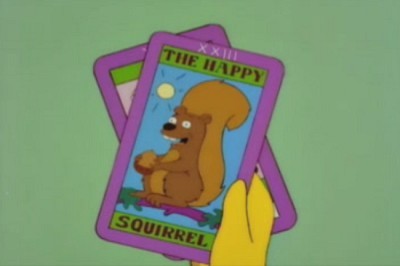
So apparently some deckmakers have started adding the Happy Squirrel to some non-traditional tarot decks, originally as a joke that was supposed to be removed before doing actual readings but then people started actually using it.
1 note
·
View note
Text
Day 15
Jarem and khai worked on the card designs


Me and Miles worked on creating enjoyable ways of expressing the rules like the ganstar rules
Da thug goin first picks a cold-ass lil card from tha "idioms" deck n' try ta cook up a "rap".Take turns goin clockwise until one of mah thugs can’t be thinkin of a rhyme.For tha 1st round you git 10 secondz ta be thinkin of a rhyme.Da game starts again n' again n' again from tha thug ta tha left of tha eliminated person, startin wit a freshly smoked up idiom.Da game repeats until there be 3-4 playas left dependin on tha deck n' at dat point they switch ta tha "red" deck.Da red deck gotz nuff no idioms but certain topics dat you rap bout instead.When one of mah thugs is eliminated/cut off from tha game they become tha "Beat maker" fo' tha other rappers n' has ta cook up a funky-ass beat while tha others is rapping.
These rules were confusing and difficult to read so we designed rhyming rules that fit the rest of the game
Pick a card from the deckMake sure its good, don’t get wreckedThink of a sentence with a rhymeDo it quick, there ain’t much time5 seconds is all you gotIt’s not that tough, don’t think a lotPass it on, put it on repeatKeep it up stay on your feetIf you can’t think of a rapToo late you gone get clappedLoser goes and takes the cardToo many? Ya lose, it ain’t that hard Red cards are what’s up nextThey’re pretty broad, put you to the testTwo sentences is what you needWhoever has less cards is in the leadWhen all the cards are done and goneTell the loser that they got shit onThis game is so profoundWhy not go another round
These rules were enjoyable and easy to read and conveyed the idea of the game much easier we asked people to read the rues and explain the game back and everyone could so we knew the rules can work with this style.
0 notes
Text


#260 - Taichi Nanao from A3!
11 notes
·
View notes
Text


#171 - Kyoujurou Rengoku from Demon Slayer
18 notes
·
View notes
Text

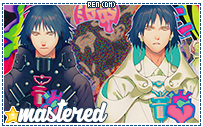
#85 - Ren from DRAMAtical Murder
There's only one card from this deck I'm collecting over and over and over again personally and it's 07, thanks--
20 notes
·
View notes
Text


#65 - Aoba Seragaki from DRAMADRAMA Island-- I mean, DRAMAtical Murder
21 notes
·
View notes
Text


#138 - Weiss Schnee from RWBY
19 notes
·
View notes
Text


#311 - Ryuji Sakamoto from Persona 5
10 notes
·
View notes
Text
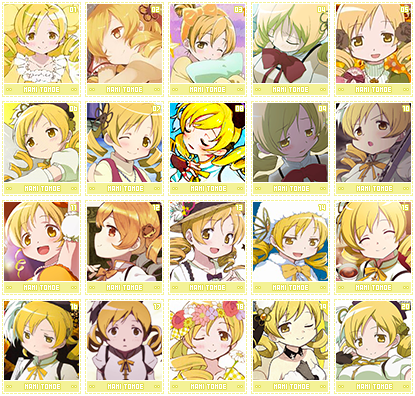

#147 - Mami Tomoe from Puella Magi Madoka Magica
14 notes
·
View notes